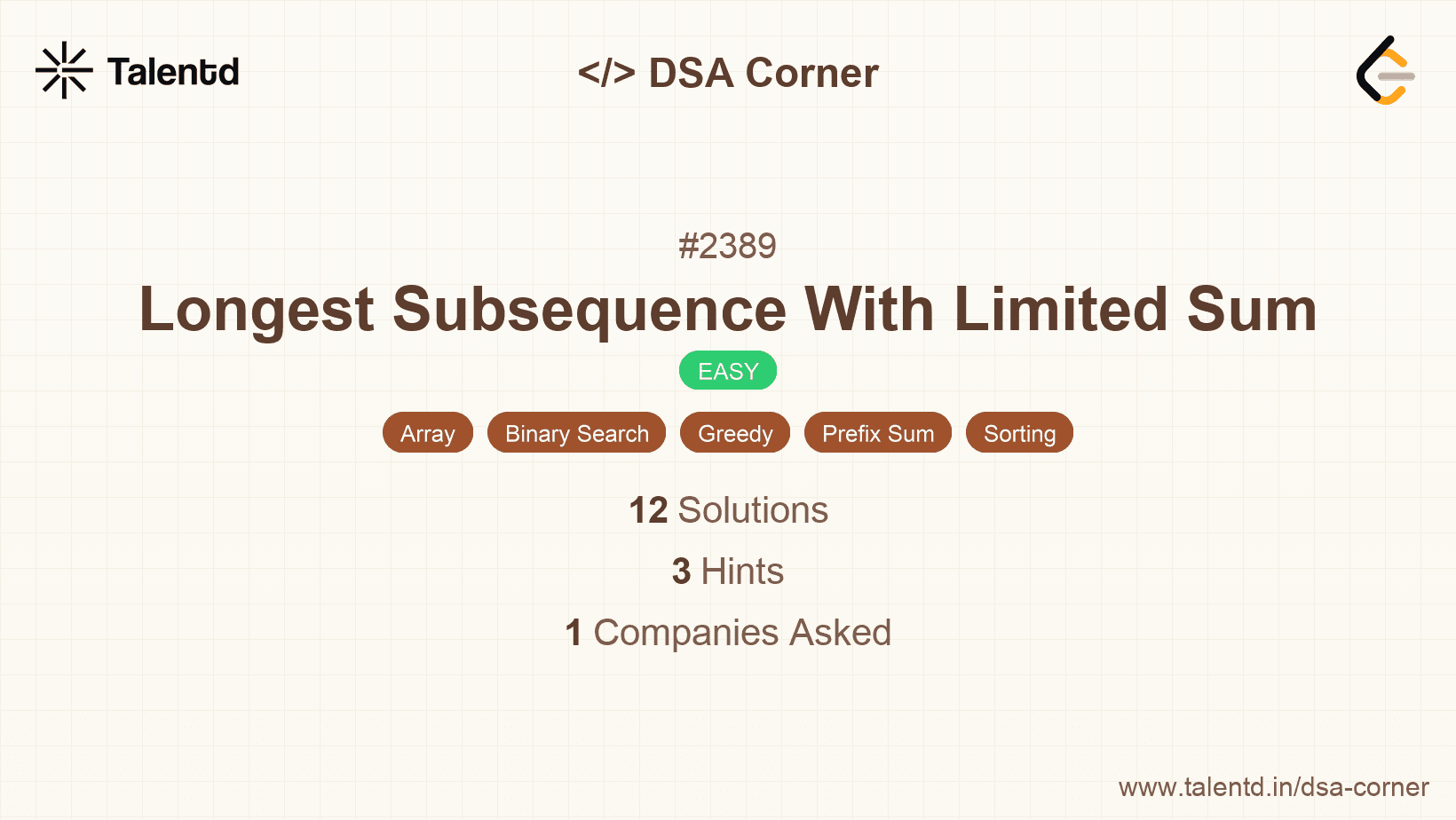
Sponsored
Sponsored
By sorting the nums array, the subsequences with the smallest sums can be easily constructed. Calculating a prefix sum for the sorted array helps in determining how many elements can be included before the sum exceeds the query limit.
Time Complexity: O(n log n + m * n), where n is the length of nums and m is the length of queries.
Space Complexity: O(n) for the prefix sum array.
1import java.util.Arrays;
2
3public class Solution {
4 public int[] answerQueries(int[] nums, int[] queries) {
5 Arrays.sort(nums);
6 int[] prefixSum = new int[nums.length];
7 prefixSum[0] = nums[0];
8 for (int i = 1; i < nums.length; i++) {
9 prefixSum[i] = prefixSum[i - 1] + nums[i];
10 }
11
12 int[] answer = new int[queries.length];
13 for (int i = 0; i < queries.length; i++) {
14 int count = 0;
15 for (int j = 0; j < nums.length; j++) {
16 if (prefixSum[j] <= queries[i]) {
17 count = j + 1;
18 } else {
19 break;
20 }
21 }
22 answer[i] = count;
23 }
24 return answer;
25 }
26}This Java solution follows the same logic as in other languages; it sorts the nums list and constructs prefix sums. It iteratively checks each query against the prefix sums to determine the maximum subsequence size.
This approach extends the prefix sum method by using binary search to efficiently find where the query fits within the prefix sum array. This reduces the time complexity significantly, especially for large inputs.
Time Complexity: O(n log n + m log n), where n is the length of nums and m is the length of queries.
Space Complexity: O(n) for the prefix sum array.
1
The solution utilizes the Python bisect_right method to perform a binary search on the prefix sums, swiftly determining the amount of numbers that sum up to less than or equal to each query limit.